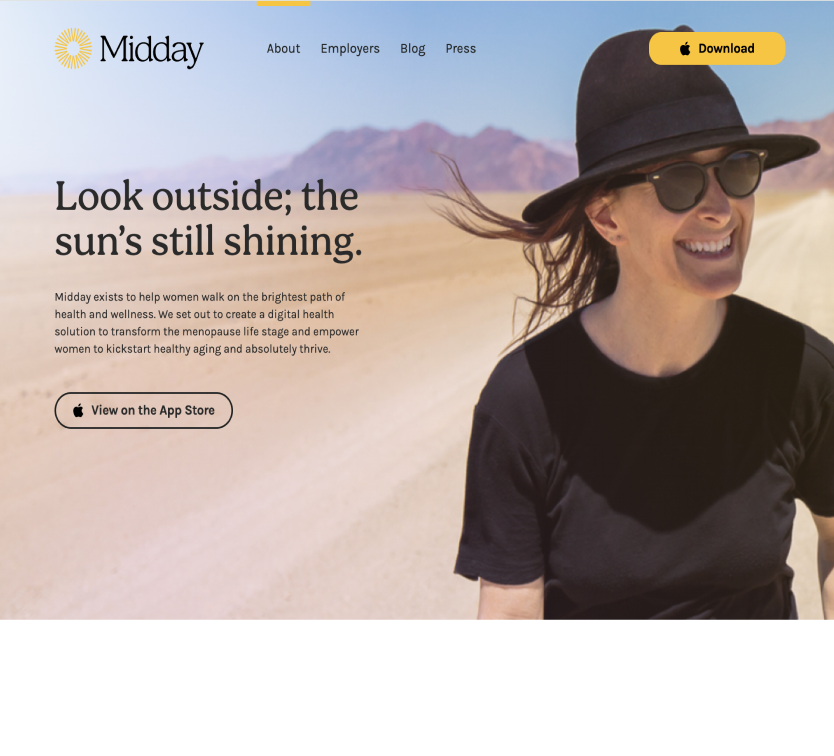INNOVATIONS IN WOMEN'S HEALTH

Innovations in women’s health are gaining momentum!
Our foresight team scanned the current landscape discovering vast technological innovation in wide
ranging areas of women’s healthcare. It is exciting to see real movement, and new products and services
being offered to make women’s health more expansive, up-to-date, and innovative.
Endometrial Care
A new use of nanotechnology and AI for diagnosis and treatment
Endometriosis is notoriously difficult to diagnose, ranging from 6-12 years but there are signals of change ushering in a new era of endometrial care.
- Currently, the only way to remove the painful lesions caused by endometriosis is through invasive surgery. But now, a new surgical method is being tested where nanoparticles are injected intravenously. These particles cluster around lesions, and when exposed to a magnetic field, heat up, effectively burning away the lesions without the need for a more invasive method.
- New applications of AI are being trained to read an MRI and a pelvic x-ray, combined with existing health data, to flag early signs of endometriosis and whether a patient is at a heightened risk of developing endometriosis lesions in their lifetime.


Cancer Screenings
At home kits and wearables making early detection accessible and easy
At-home cancer screening is currently a key area of investment in the oncology space to provide cost effective ways of testing to those who can’t afford screening or can’t travel to a clinic.
- Tear-based breast cancer screener is an exciting innovation that allows people to collect their tears and mail them to the lab. After a physician reviews the results, participants are advised whether they should book a mammogram for further testing.
- People with a uterus now also have the option to test for cervical cancer and HPV from blood collected on tampons without having to leave their homes.
- Bras have been developed to address the disparity in mortality rates for breast cancer between Black women and other women who suffer from the disease. The bra has silicone cups which mimic the signs of breast cancer in women with darker skin and teach people what to look for when self-examining.


Cardiovascular Conditions
Sophisticated AI applications for a better understanding of how women experience heart attacks

Mental Health
By women for women with some help from tech
All women need to care for their mental health, but many find the existing system to be ignorant, patriarchal, and inaccessible. The good news is that change is underway.
- Startups, such as Plume and Health in Her Hue are emerging that connect BIPOC women to BIPOC therapists, trans patients to gender-affirming therapists, and so on, to ensure that these patients are getting their needs met and are truly being understood and supported.
- Woebot, an AI application in development, imbued with cognitive behavioral therapy theory for treating virtual patients with conditions like anxiety and depression. Down the road this will be beneficial for women who cannot access a human therapist.


Menopausal Care
Meeting the needs of over 1 million US women each year through machine learning and AI developments
The Office of National Statistics report that women over 50 have been the fastest growing group in the workforce for several years. As a result of their age, this group face a unique set of challenges and needs at work, one of which being combatting menopause symptoms. We are now seeing that it is now a space ripe for innovation and change.
- An app is available for women to enter their health data and information about their menopausal symptoms and receive a personalized plan for managing and mitigating the development and severity of symptoms.
- Machine learning is also being applied in studies around the world to review health data to predict which vasomotor symptoms (hot flashes and night sweats) an individual women will suffer from and how to manage them most effectively.
- Of the estimated 10 million Americans who have osteoporosis, more than 8 million of them are women because of estrogen loss during menopause. To that end, researchers have developed an AI that is able to diagnose osteoporosis from a hip x-ray, before fractures occur.


Although promising, how will these innovations evolve in the years to come to continue advancing women’s health?
That will depend on how much we invest in them now, and how we contribute and build on them.

‘Best-Care’ & ‘Worst-Care’ Future Scenarios
We believe that for women’s health the ‘best-care’ scenario can be the only way forward.
Many companies have decided to no longer fund research into the unique ways health manifests
in the female physiology. While there has been a great deal of positive momentum, social
and political agendas put the future of female health advancements at risk.

Values are shifting
in women’s health!
Today, we are seeing the emergence of an expanded future of women's health.
One that is starting to take seriously a view beyond reproduction, driven by emerging shifts in traditionally held values in society and mainstream culture.
While many of these shifts are rooted in aspects of reproduction, the shifts themselves indicate a move towards a widening of the women’s health lens.
learn more about the shifting Values





